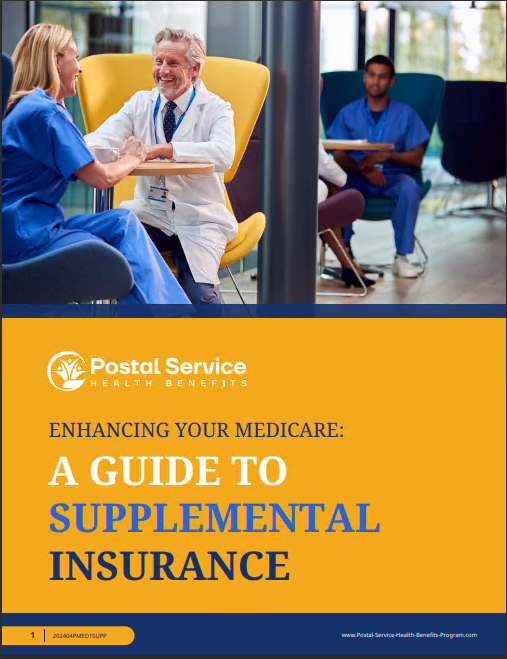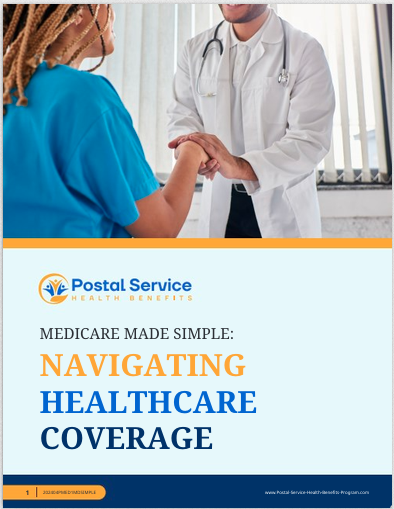Key Takeaways
-
High Deductible Health Plans (HDHPs) can help lower your premium costs but require more out-of-pocket spending before coverage begins.
-
Understanding your plan’s deductible, out-of-pocket maximum, and cost-sharing is crucial to managing healthcare expenses effectively.
What Are High Deductible Health Plans (HDHPs)?
High Deductible Health Plans, or HDHPs, are health insurance options with lower monthly premiums but higher deductibles compared to traditional plans. These plans are designed to give you more control over how you spend your healthcare dollars, encouraging careful consideration of medical services and costs.
Under an HDHP, you pay for most healthcare expenses out-of-pocket until you meet the plan’s deductible. After reaching this amount, your insurance starts sharing the costs. For Postal Service employees and annuitants enrolled in the PSHB program, HDHPs are one of several options to explore during enrollment periods.
Decoding the Deductible: What You Need to Know
The deductible is the cornerstone of any HDHP. In 2025, an HDHP typically requires a minimum deductible of $1,650 for self-only coverage and $3,300 for family coverage. These figures can feel overwhelming, especially if you’re new to this type of plan. But understanding how deductibles work is key to avoiding surprises.
How Deductibles Work
-
Pre-Deductible Period: During this phase, you’re responsible for paying 100% of your medical expenses, excluding certain preventive services, which are often covered at no cost.
-
Post-Deductible Period: Once you’ve met your deductible, your insurance begins to share costs through coinsurance or copayments. This continues until you hit the out-of-pocket maximum.
Out-of-Pocket Maximum: Your Financial Safety Net
Every HDHP has an out-of-pocket maximum, which is the most you’ll pay in a given year for covered services. For 2025, the limits are $8,300 for self-only coverage and $16,600 for family coverage. Once you reach this cap, your plan covers 100% of all eligible expenses for the rest of the year.
Why It Matters
The out-of-pocket maximum provides a financial safety net, ensuring you won’t face unlimited expenses. It’s especially important for those with chronic conditions or unexpected medical emergencies. Planning for this amount can help you avoid financial stress in worst-case scenarios.
Balancing Premiums and Deductibles: Finding Your Sweet Spot
The lower monthly premiums of HDHPs can be attractive, but it’s important to weigh this against the higher out-of-pocket costs. Consider the following factors when deciding if an HDHP is right for you:
-
Your Health Status: If you’re generally healthy and don’t anticipate many medical expenses, an HDHP could save you money overall.
-
Family Needs: For families, particularly those with young children or ongoing medical needs, the high deductible might outweigh the lower premiums.
-
Budgeting Capabilities: Can you comfortably afford the deductible and out-of-pocket maximum if necessary? If not, a lower-deductible plan might be more suitable.
PSHB HDHP Features: What’s Included?
Postal Service Health Benefits HDHPs offer comprehensive coverage, but the structure of these plans may feel different from traditional health insurance options. Key features include:
-
Preventive Care Coverage: Most preventive services, such as annual check-ups, vaccinations, and screenings, are covered without requiring you to meet the deductible.
-
Health Savings Account (HSA) Eligibility: HDHP enrollees can pair their plan with an HSA, allowing them to save pre-tax dollars for medical expenses.
-
Broad Provider Networks: PSHB plans generally offer access to extensive provider networks for in-network discounts.
The Role of Health Savings Accounts (HSAs)
One of the most significant advantages of an HDHP is HSA eligibility. An HSA allows you to:
-
Save money pre-tax for qualified medical expenses.
-
Roll over unused funds annually.
-
Grow your savings through investment opportunities, tax-free.
In 2025, the contribution limits for HSAs are $4,300 for individuals and $8,550 for families. If you’re 55 or older, you can contribute an additional $1,000 as a catch-up.
Managing Costs: Tips for Staying Ahead
High deductibles require strategic planning to manage costs effectively. Here are some tips to help you make the most of your HDHP:
-
Estimate Annual Healthcare Costs: Review your medical history and anticipate potential expenses for the year.
-
Use In-Network Providers: Sticking to in-network care reduces costs significantly.
-
Leverage Preventive Services: Take advantage of free preventive care to avoid costly health issues later.
-
Build Your HSA: Regular contributions to your HSA can create a financial cushion for unexpected expenses.
-
Understand Your Plan’s Details: Know the specifics of your deductible, coinsurance rates, and out-of-pocket maximum.
When an HDHP Might Not Be the Best Fit
While HDHPs offer many benefits, they’re not for everyone. Consider alternative PSHB plans if:
-
You have ongoing medical needs requiring frequent care.
-
You’re unable to save enough to cover the deductible and out-of-pocket maximum.
-
You prefer predictable, lower upfront costs, even if premiums are higher.
Evaluating Your Options During Open Season
Open Season is the time to assess your healthcare needs and select the plan that best aligns with your circumstances. Take these steps to ensure you’re making an informed choice:
-
Compare Plans Side by Side: Review premiums, deductibles, and out-of-pocket maximums for all available options.
-
Consider Family Changes: Account for life events, such as a growing family or changes in employment.
-
Check Network Access: Verify that your preferred healthcare providers are in-network.
Planning for the Year Ahead
Once enrolled in an HDHP, set yourself up for success with proactive planning:
-
Track Medical Expenses: Keep detailed records to monitor your progress toward the deductible and out-of-pocket maximum.
-
Review Your HSA Contributions: Adjust your contributions as needed to align with expected expenses.
-
Communicate with Providers: Discuss costs upfront to avoid surprises and explore payment plans if necessary.
Choosing the Right Path for You
High Deductible Health Plans can offer significant savings and flexibility for the right individuals, but they’re not a one-size-fits-all solution. By understanding the trade-offs and planning strategically, you can make an informed decision that supports your health and financial goals. Remember to leverage resources like PSHB plan brochures and support services to clarify any uncertainties.







